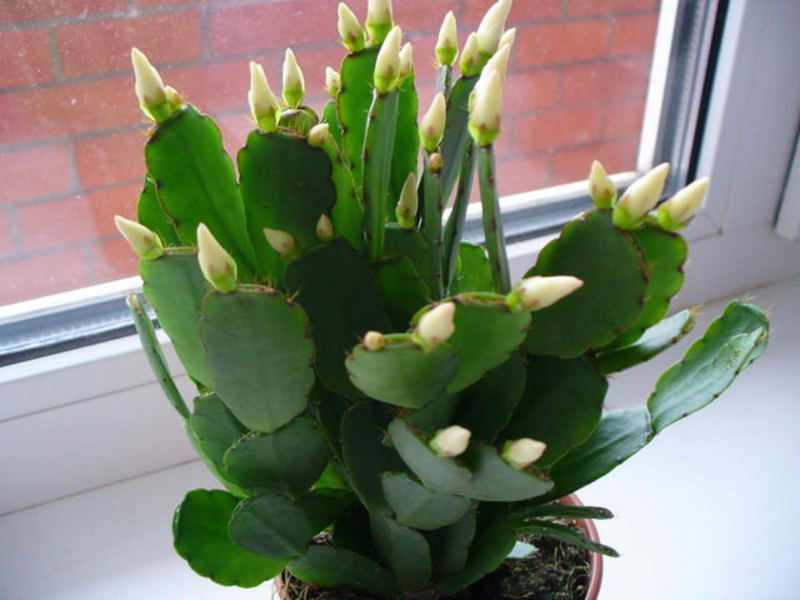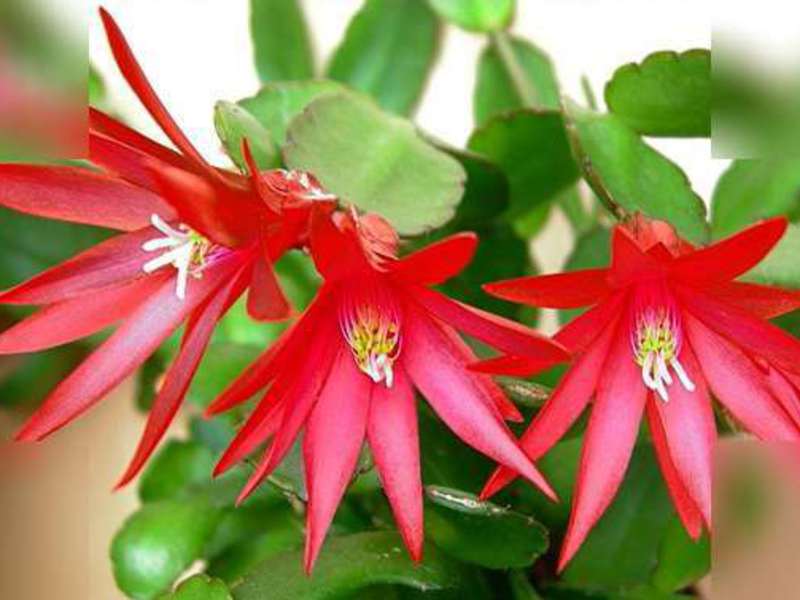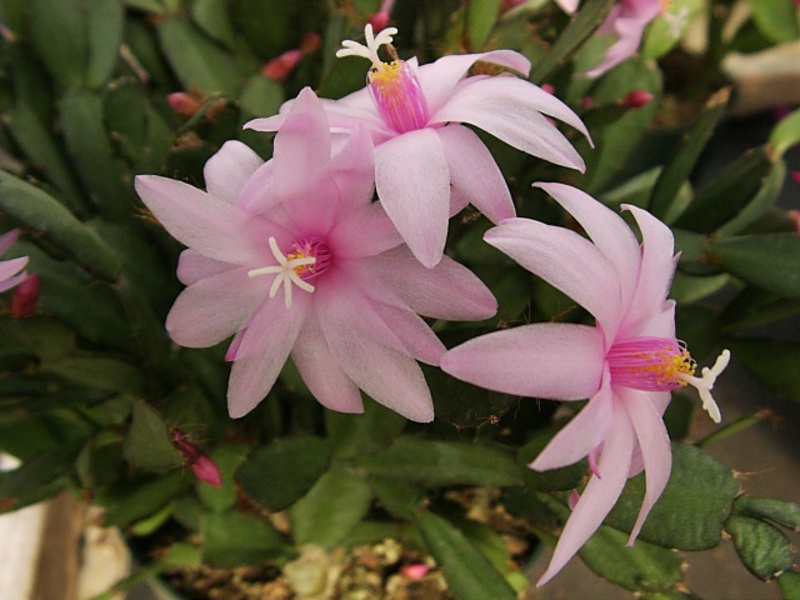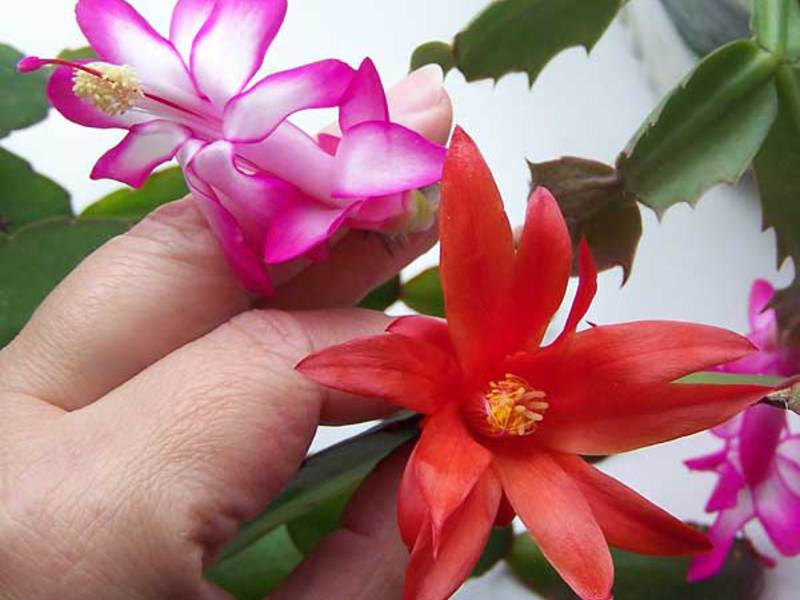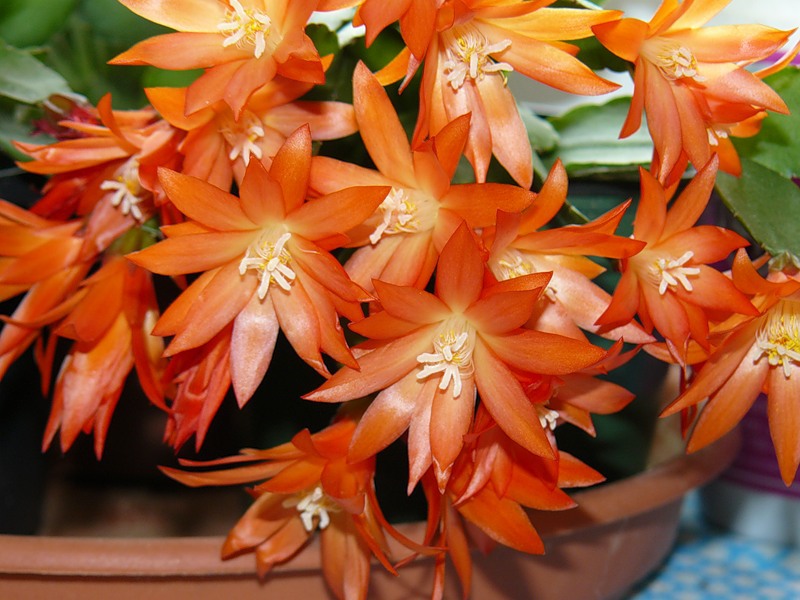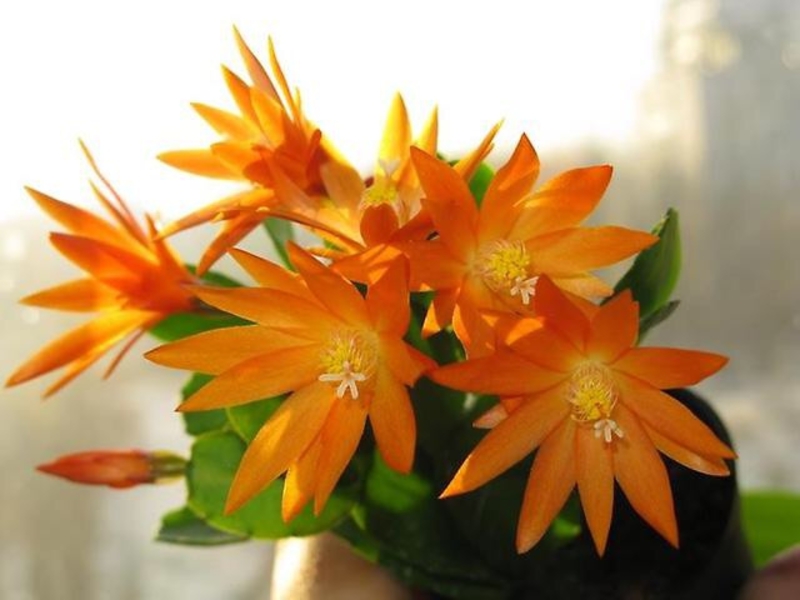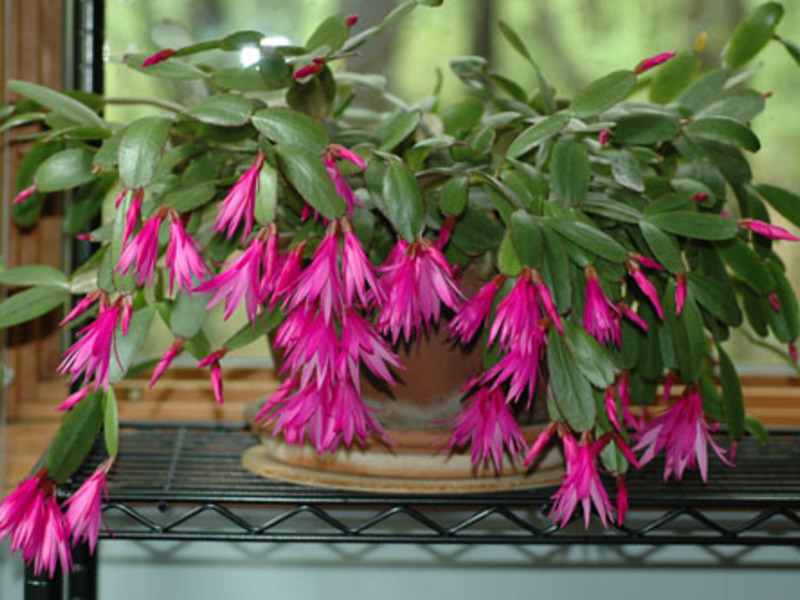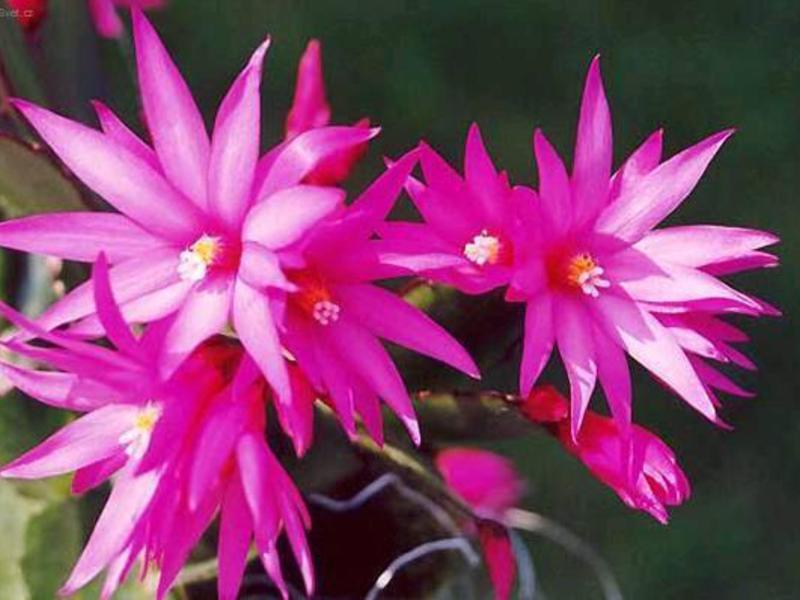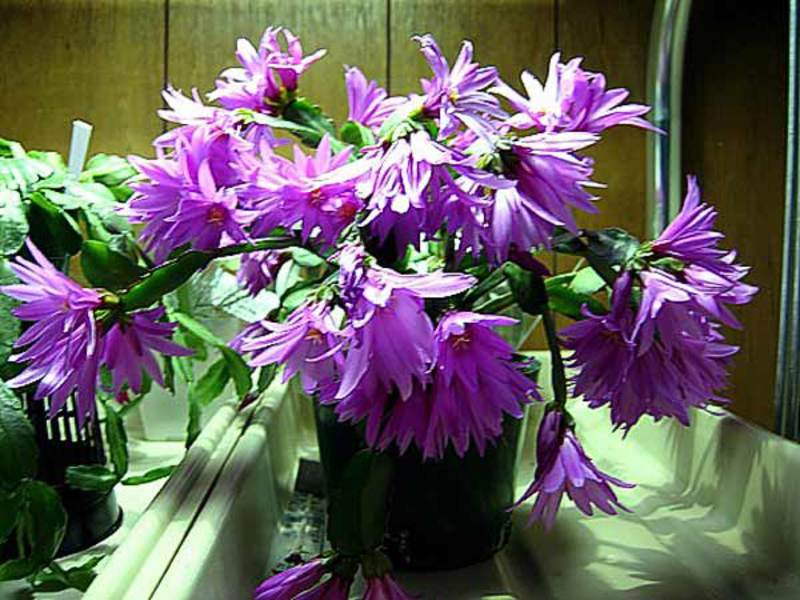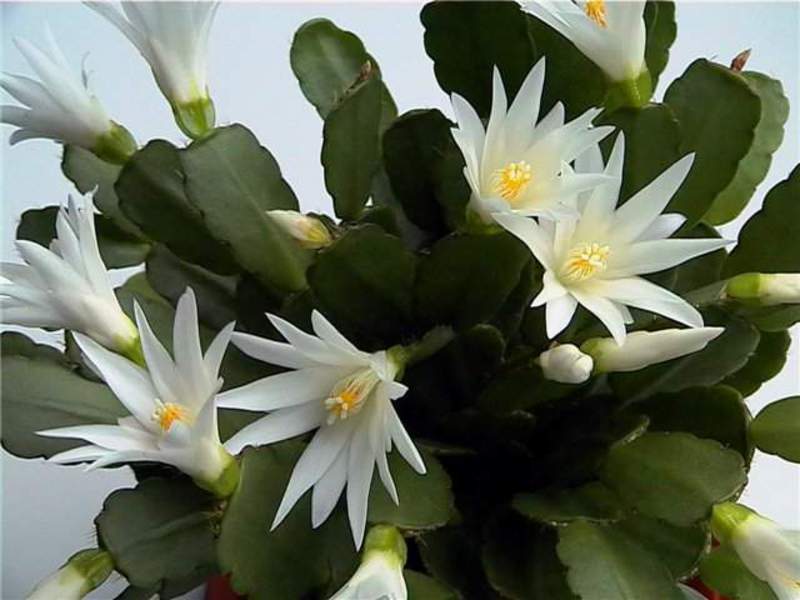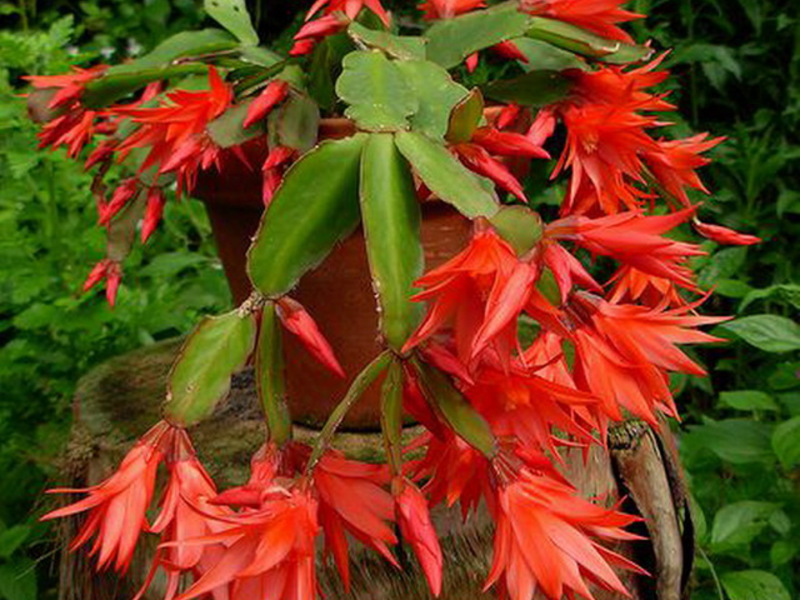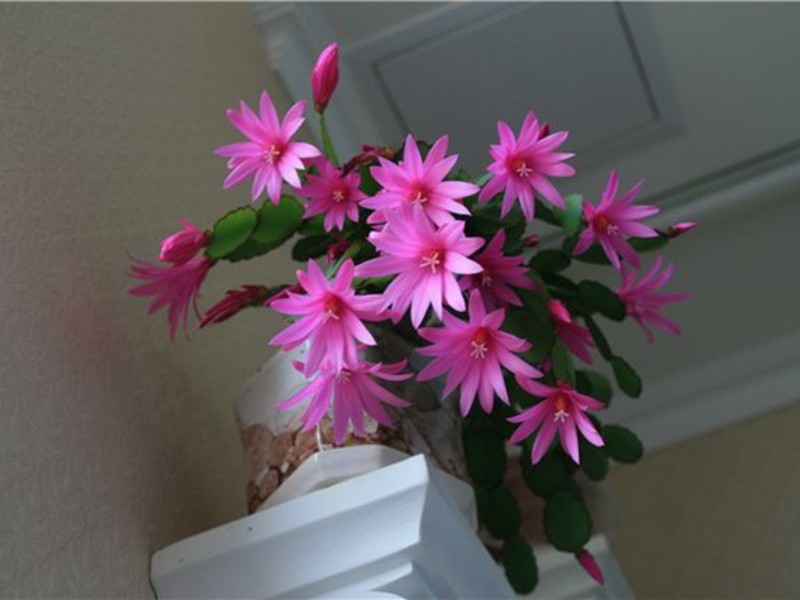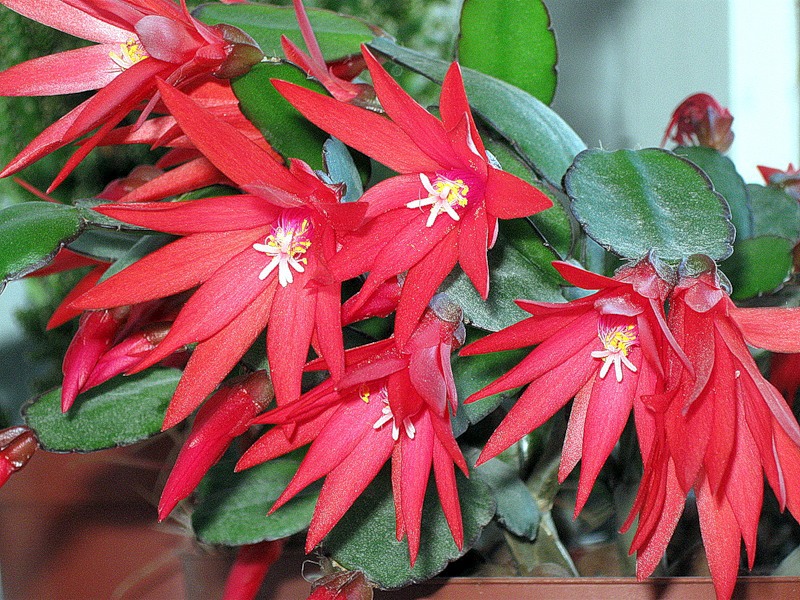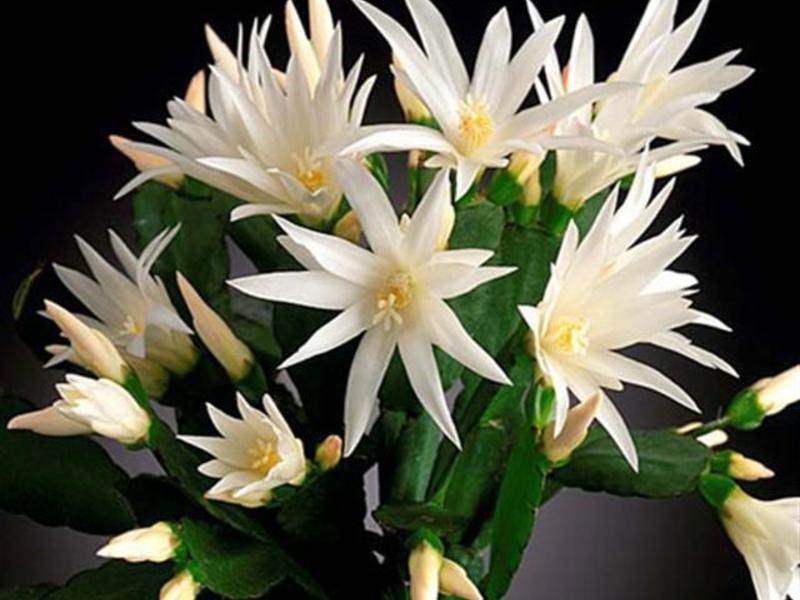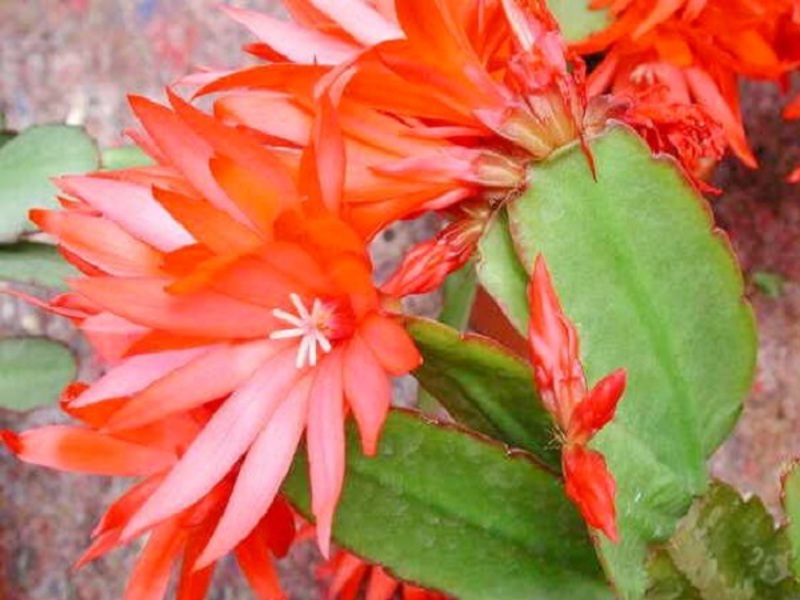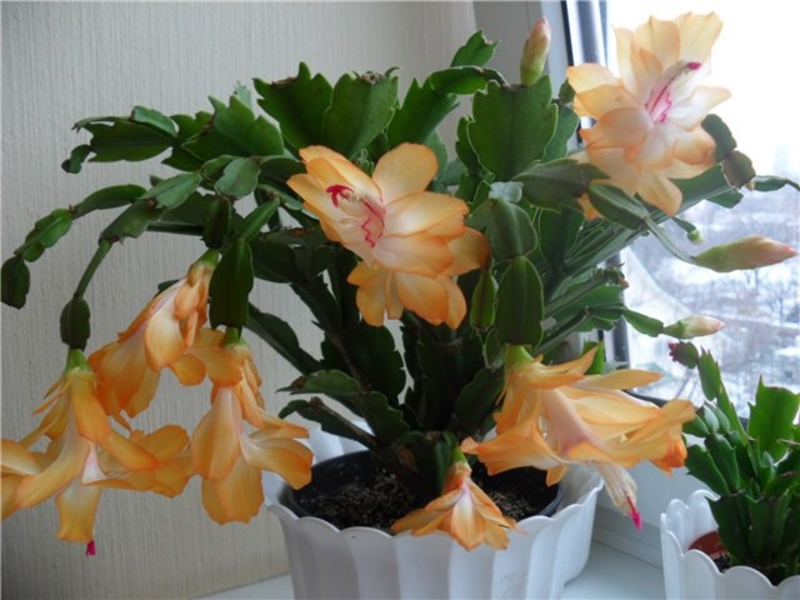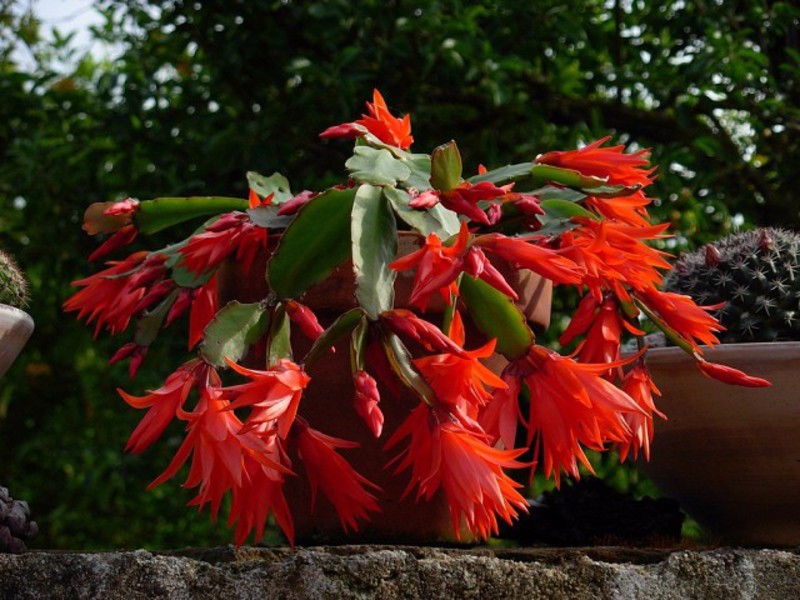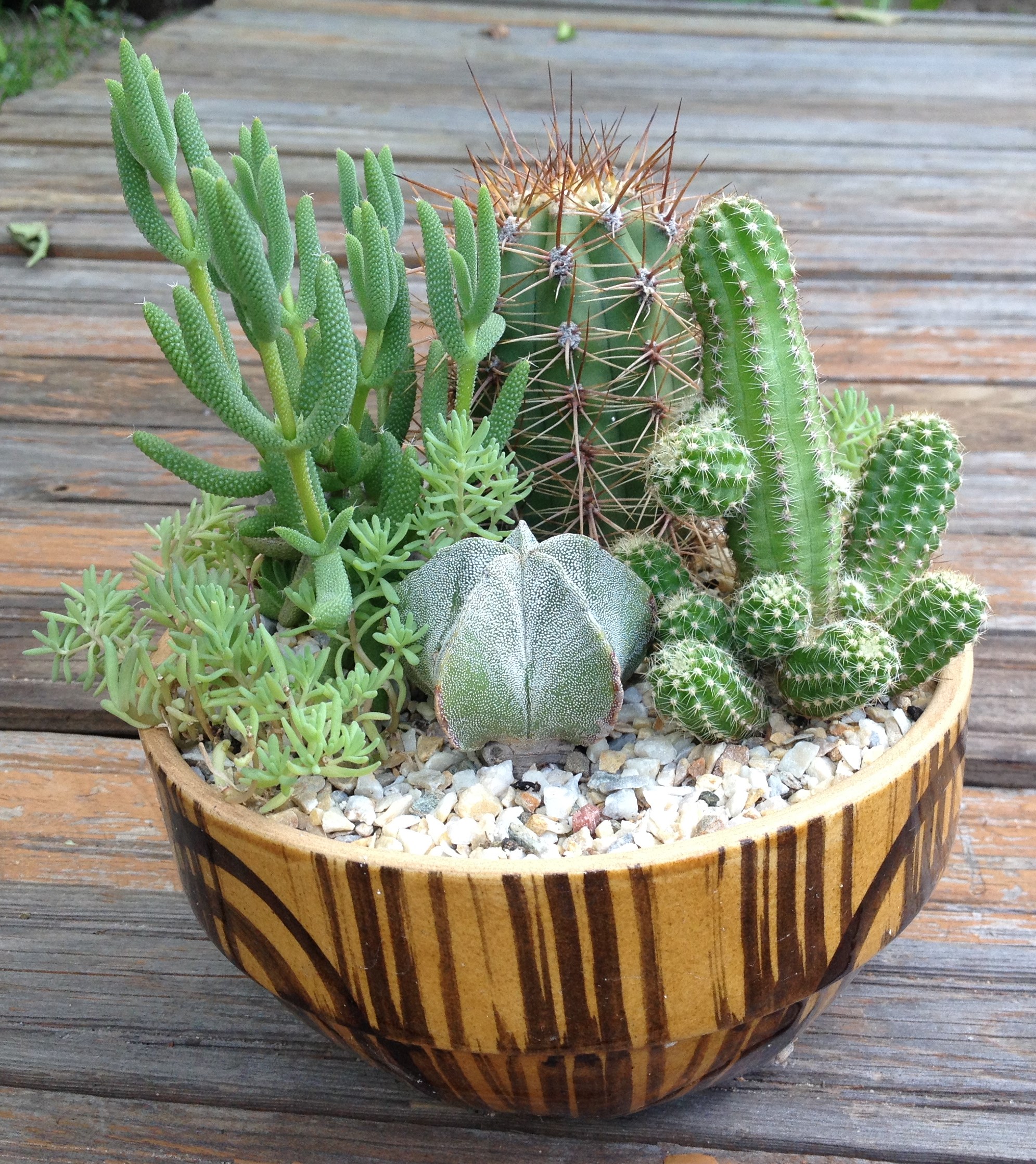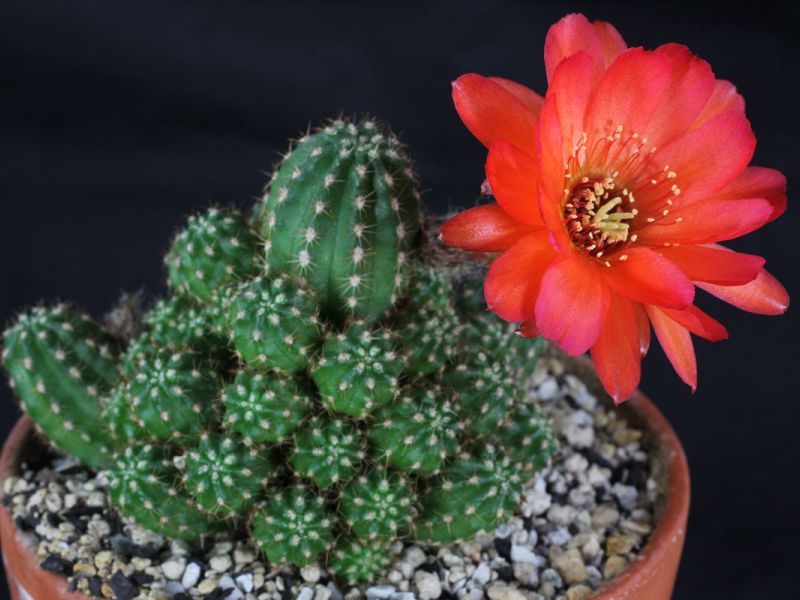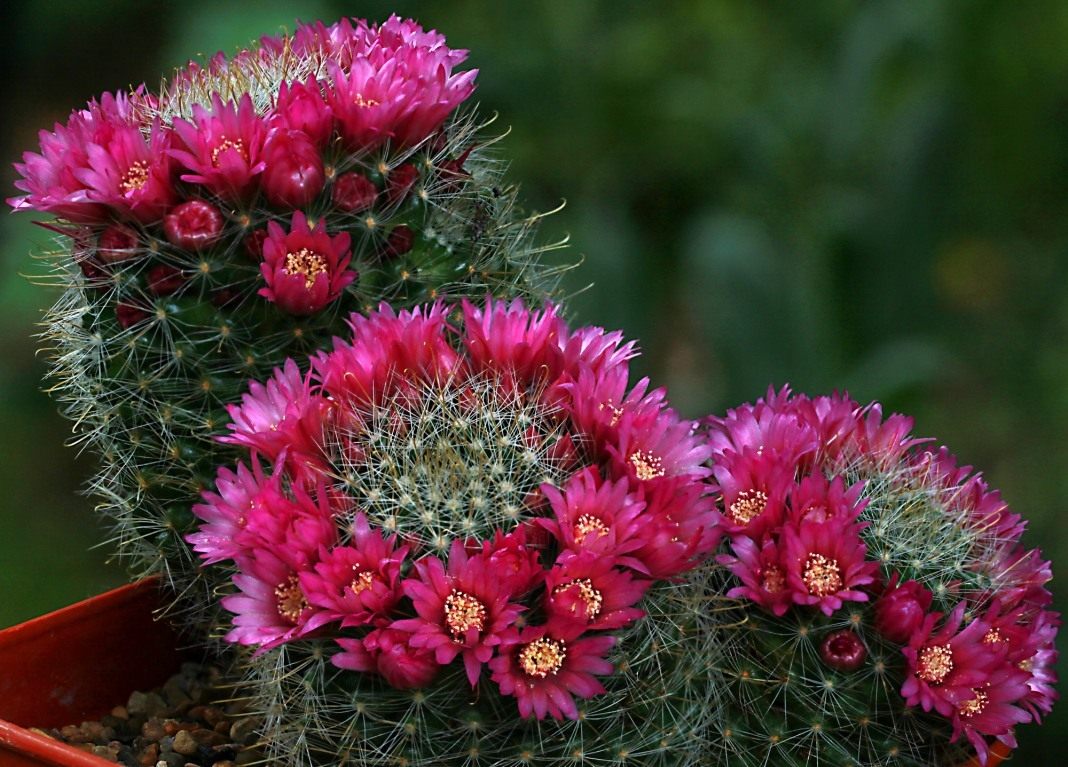Cacti are extremely popular home-grown plants. They are very beautiful, especially during the flowering period. In nature, there are more than three thousand species. Their difference lies in the shape, size of the stems, the structure of flowers, the presence of spines or hairs. Forest cacti grow in the tropical forests of Central and South America. Their appearance is completely different from their thorny fellows from the desert. These plants have leafy, hanging stems.
Content
Classification
Forest cacti are subdivided into the following genera:
- Epiphyllums.
- Ripsalis.
- Rhipsalidopsis.
- Schlum berger.
In the modern classification there are no clear distinctions and it is often possible to find the same plant in different genera. And in various publications, there is practically no division at all, and all the names can be seen alternately. We are interested in Ripsalidopsis, so let's try to get to the bottom of the truth. Previously, experts attributed them to seven genera, but most often referred to as epiphilopsis.
To date, all Ripsalidopsis or Easter cacti belong to the genus Gatiora.
Description
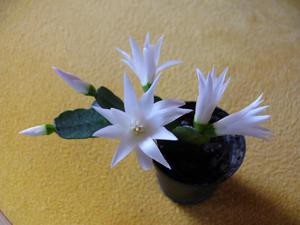 The country of origin of these plants is Brazil. They grow in hot and humid conditions, they can be seen on stumps, in hollows, in heaps of foliage humus. Rhipsalidopsis thrive in the shade of tall trees and will suffer in direct sunlight. They do not have thick skin and thorns like other cacti. This is not necessary, because there is no need to condense vapors from the air, where there is constant humidity.
The country of origin of these plants is Brazil. They grow in hot and humid conditions, they can be seen on stumps, in hollows, in heaps of foliage humus. Rhipsalidopsis thrive in the shade of tall trees and will suffer in direct sunlight. They do not have thick skin and thorns like other cacti. This is not necessary, because there is no need to condense vapors from the air, where there is constant humidity.
Ripsalidopsis stems adapted to absorb moisture from the air, for this a large number of air roots develop on them. They are at any time able to turn into a root system, only in contact with the nutrient medium.
If the air is saturated with moisture and there is no direct sunlight, this Easter cactus can thrive at home at temperatures ranging from 17 to 20 degrees in summer and 15 to 17 degrees in winter. Because its fleshy stems are well adapted to store nutrients and moisture.
Under favorable conditions, Ripsalidopsis form flowers at the ends of the shoots. Their color is not very diverse, but always bright and juicy. The flowers are white, pink and red with different shades. Blooming in early spring, the plants delight with their beauty for about two months.
Types and varieties
There are few types and varieties of Ripsalidopsis. In vivo, Partner's Ripsalidopsis is most common with bright orange flowers. The pink species was named for its flowering color, the hybrid ripsalidopsis has lilac-pink flowers and a bright yellow center of stamens.
Varietal Ripsalidopsis are distinguished by a more refined beauty of flowers.
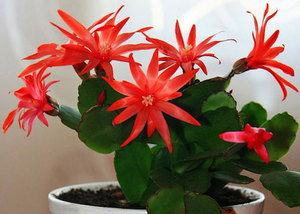 Andromeda produces large flowers of a fantastic crimson color,
Andromeda produces large flowers of a fantastic crimson color,- Arnica boasts almost red buds that unfold into wonderful pink-crimson flowers.
- Castor has large red flowers,
- The bright orange ones are formed by Auriga.
- At Torano, spectacular bright crimson inflorescences are formed, in the center of which a wide yellow stripe flaunts, forming an illumination of each flower.
- Fonix's petals are bright pink and dark cherry color,
- Cetuse is distinguished by its velvety almost white flowers,
- At Sirius, they are flaky and glowing.
Since the flowering of Ripsalidopsis begins on Easter, it is called the Easter cactus. But many confuse him with Schlumberger, who are called the Decembrists, and in vain are waiting for flowering in December. These plants are similar, but the stem shape is slightly different.
The leaf-shaped segments of the Ripsalidopsis, the photo of which you see below, are more rounded, their shape has almost no protrusions, but spines remain at the tips, more reminiscent of thick bristles.
Schlumbergers have sharp teeth instead of bristles at the edges. The sizes of the segments in both are the same, a maximum of 3 cm in width and 6 cm in length. The Easter cactus, like the Decembrist, grows by the formation of segments, which are formed at the ends of the shoots and lean towards the ground.
Rhipsalidopsis can be distinguished from Schlumberger and the shape of the flowers. Rhipsalidopsis produce flowers that are symmetrical with an even corolla, and in its relative the corollas are noticeably beveled. Also, the pink variety of Ripsalidopsis blooms, exuding aroma.
Rhipsalidopsis: care
Since in the natural environment, plants develop at high air humidity, then home conditions should be created as close as possible to natural ones. Forest cacti have delicate and underdeveloped roots, so they do not need a soil rich in trace elements and abundant moisture in a pot, this will have a detrimental effect.
Soil and planting
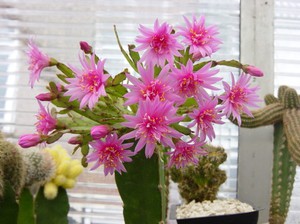 A forest cactus needs a loose, coarse substrate consisting of coarse sand, dust-free crushed stone, dust-free crushed brick, clay-sod soil with lumps without grass and roots, charcoal. Before use, the mixture is steamed in the oven, add 3-4 liters of one teaspoon of superphosphate and crushed chalk or slaked lime. The soil should have a slightly acidic reaction, its indicator is from 6 to 4.5. The prepared superphosphate will acidify the soil.
A forest cactus needs a loose, coarse substrate consisting of coarse sand, dust-free crushed stone, dust-free crushed brick, clay-sod soil with lumps without grass and roots, charcoal. Before use, the mixture is steamed in the oven, add 3-4 liters of one teaspoon of superphosphate and crushed chalk or slaked lime. The soil should have a slightly acidic reaction, its indicator is from 6 to 4.5. The prepared superphosphate will acidify the soil.
Home Ripsalidopsis need care with an annual transplant after flowering. it occurs at the end of May, beginning of June... It should be borne in mind that the root system of the plant is small and it is demanding on the air, therefore, the bowl must be selected shallow and small. The old soil should be carefully removed from the roots with a brush, they are thoroughly cleaned, while preventing damage and breaking off.
The root system should be assessed for development. If they are full of health, then the volume of the pot can be increased by 1.5 times. A smaller size is taken with underdevelopment. During planting, the roots of the plant are evenly spread over the pot and carefully sprinkled with earth over and over again.
You can do this: first, deepen the stem, then raise it and fill it up, tamping the substrate by tapping on the walls of the container.
Then the soil is easily compacted by hand... Make sure that the green part of the plant remains uncovered, otherwise it will rot. After that, the forest cactus is watered and placed outside the sun.
Watering
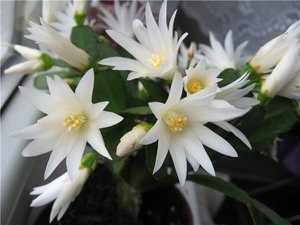 During the flowering period, Ripsalidopsis needs abundant watering, but without stagnant water in the pot. Water can be poured directly onto the stems, excluding the flower area. They also love when grooming includes frequent spraying and washing with warm water before budding.
During the flowering period, Ripsalidopsis needs abundant watering, but without stagnant water in the pot. Water can be poured directly onto the stems, excluding the flower area. They also love when grooming includes frequent spraying and washing with warm water before budding.
The plant needs watering all year round, but it is cut back from October to February, and so does the fertilization as this is the dormant time. From February to March - the time for bud development - proper care is resumed by increasing watering. Supply the plant once or twice a month root and foliar dressing... Adhering to the instructions, use humus and nitrogen-containing ready-made mixtures for forest cacti.
Important! Organic fertilizers cannot be used to feed these plants.
If the care is organized correctly, then wait for flowering in April-May. If there are a lot of branches on the bush, then a sufficient number of flowers are formed. During the flowering period, the tropical cactus is also protected from the sun and fed. Tell all family members that the pot with this plant cannot be rearranged and moved during the flowering period, it is even undesirable to turn it, as it can shed all the buds. During the dormant period, a tropical cactus needs a temperature of 15-17 degrees to lay buds, as soon as the plant is going to bloom, the temperature is raised to 18-20 degrees.
Reproduction
As soon as the ripsalidopsis fades, it can be propagated and transplantedas it enters the growth band. Reproduction is very simple: you just need to wrap the segment around its own axis and it will easily break off. Then it should be dried for 3 days, and then put upright, leaning against a stick, without digging into the moistened soil.
After a while, roots will appear, after which the stalk is deepened into the ground. If the care is done correctly, several flowers can be expected already next spring.
Diseases and pests
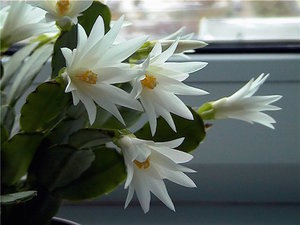 The plant is susceptible to pests and diseases. The symptoms of undesirable conditions can be abscission and drying of the segments. Inspection begins from the top, if rusty deposits and stripes are detected, then ticks can start... They are fought with hot water or 70% alcohol. It is enough to process the segments with one of the means. Nothing will happen to the plant, but get rid of the ticks.
The plant is susceptible to pests and diseases. The symptoms of undesirable conditions can be abscission and drying of the segments. Inspection begins from the top, if rusty deposits and stripes are detected, then ticks can start... They are fought with hot water or 70% alcohol. It is enough to process the segments with one of the means. Nothing will happen to the plant, but get rid of the ticks.
Rhypsalidopsis can wither and lose a large number of segments due to poor roots. Root suppression occurs in cases:
- Stagnant water and excess moisture.
- Depleted soil.
- Root burns with poorly diluted dressings. They are used only after watering.
- Appearance of worms in the soil - white worms.
With such symptoms, the plant should be removed from the pot and the roots and soil should be examined. Diseased roots are removed, and healthy ones should be poured over with hot water, so that the hand can endure a little, remove the remnants of the earth in a solution of dark crimson manganese, dry it and plant in a new substrate. To reduce the stress on the roots of the upper part of the plant can be shortened slightly with scissors.
Segments can fall off from lack of air humidity, from stress caused by frequent rearrangement of the pot, if the plant feels cold.
After buying Ripsalidopsis, the plant at home can shed all the buds due to stress. Do not be upset about this, because next year, by Easter, with good care, it will present a whole fireworks display of bright and delicate flowers.
